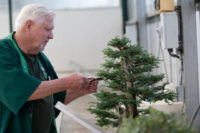Fewer than one in three Sonoma County children were ready for kindergarten when they entered school last fall, according to a new report released by the county Department of Human Services that found persistent and troubling disparities along ethnic, racial and economic lines.
Kindergarten readiness declined in Sonoma County for the fifth consecutive year, according to a report issued today by the Road to Early Achievement and Development for Youth (READY), an initiative by the Sonoma County Department of Human Services and First 5 Sonoma County.
“This study shows us where resources are lacking for families and where we can do better as a community,” said Sonoma County Supervisor James Gore, chair of the Board of Supervisors. “We need to support families to make sure each child is ready to succeed in kindergarten and beyond.”
The COVID-19 pandemic and major wildfires in three of the last five years have contributed to declines in kindergarten readiness. Overall, only 32 percent of Sonoma County children were ready for kindergarten last fall, down from 40 percent in 2016-17.
Marginalized populations are less likely to be ready for kindergarten. The report found 28 percent of Latinx children, 29 percent of Black children and 37 percent of Indigenous/Native American children were ready for kindergarten last fall. In comparison, 50 percent of white children and 48 percent of Asian/Pacific Islander children were ready for kindergarten.
“What may look like an achievement gap is actually an opportunity gap reflective of systemic and structural racism,” said Angie Dillon-Shore, executive director of First 5 Sonoma County, which funds the READY program. “Children who have more opportunities that support their optimal cognitive and social emotional development from birth are far more likely to be ready to succeed when starting kindergarten.”
Research shows that readiness for kindergarten lays the foundation for long-term school success. Positive factors that contribute to readiness include access to quality early child care and education, early literacy activities such as reading, singing and playing at home, and opportunities that help children heal from early trauma. Barriers to school readiness include poverty, lack of access to learning environments that reflect diverse students’ culture and language, the high cost of quality child care, and lack of internet access.
“The READY study found that white and Asian children had more of the resources and learning opportunities that build school readiness than Black, Latinx and Indigenous/Native American children,” said Oscar Chavez, assistant director for the county Human Services Department and member of the First 5 Sonoma County Commission. “The research helps us understand the challenges to an equitable start so we can focus on how to help all school children succeed.”
The challenges already facing families and children in our community were further exacerbated by the pandemic and recent wildfires, which led to distance learning and the rapid closure of early learning programs.
“Additionally, families faced both decreased child care options and severe impacts on household income as workers were laid off or hours reduced, both factors that affect school readiness,” Chavez said.
To measure local children’s school readiness, READY uses the Kindergarten Student Entrance Profile (KSEP), a research-based screening tool used nationally. The data for the 2021-22 report came from two primary sources: the administration of the KSEP to kindergarten students in eight Sonoma County school districts; and a survey of kindergarten parents. The complete 2021-22 report is available at the county’s READY web page: https://upstreaminvestments.org/impact-make-a-change/learning-communities/ready
Data collected from 2016-2021 found that children who attended early childhood education programs (including preschool, licensed home-based childcare, and Head Start) were almost twice as likely to be ready for kindergarten as children who did not attend any early learning programs.
Since higher incomes allow more access to learning resources, family income was a predictive factor in school readiness. Children whose annual family income was $75,000 or above were more than two times more likely to be ready for kindergarten compared to children whose annual family income was $34,999 or below.
Local funders, including First 5 Sonoma County, will use the report to inform specific investments for children 5 and younger. In addition, the Sonoma County Board of Supervisors has allocated $6.35 million of American Rescue Plan Act funding to address early learning facility and workforce gaps and create a guaranteed basic income pilot for families with young children. Additionally, more funding has been awarded to address housing instability, food insecurity and a variety of mental health services, including several addressing childhood trauma. All of these programs will work together to support families so they can best prepare children for kindergarten.
The state Department of Education’s implementation of universal pre-kindergarten over the next three years will ultimately make at least partial-day early education available to every 4-year-old child in California by 2025. As part of the California Comeback Plan, signed by Gov. Gavin Newsom on Oct. 5, 2021, additional funding is also being allocated to dual language learners. A local effort, Our Kids Our Future, aims to establish a dedicated revenue stream to increase access to quality early learning through a countywide ballot measure in November 2022. Stakeholders are hopeful these efforts to expand culturally appropriate and pre-kindergarten care will improve kindergarten readiness in California and in Sonoma County.
Reducing the disparity in school readiness requires a two-generation approach. “Parents are their child’s first and most important teacher. They can ensure a language-rich, environment at home, including daily reading, storytelling, music, and lots of interaction, as well as seeking out high-quality early learning programs, such as Pasitos Playgroups, AVANCE preschool and licensed family child care.” Dillon-Shore said. “For government and community-based organizations, policies supporting family economic mobility, asset-building and creating educational opportunities for Black, Latinx, and Indigenous/Native American parents will also help children thrive.”






While racial, etc. disparities are important to correct, the fact remains that if ALL were eliminated tomorrow only Half od the county’s children are ‘ready for kindergarten.’